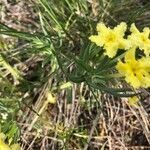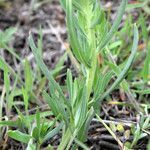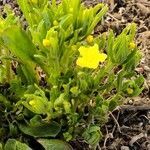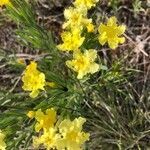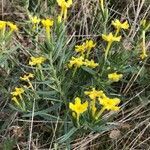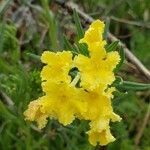A plant that keeps growing from year to year. The leaves are alternate and 5-10 cm long. The edges are rolled. The flower stems are 15-30 cm long and have flowers in clusters at the end. The flowers are trumpet shaped with 5 petal-like lobes that open 2.5 cm across. The edges are crinkled.
